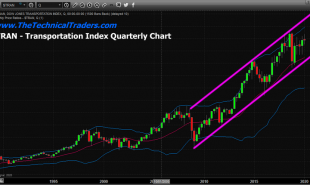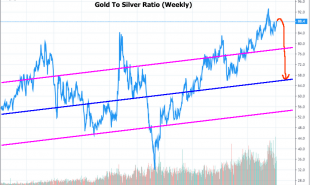
Cover photo : Welder works on shale oil pipeline to be used in Missouri river
Top 5 Risks To Oil Prices
By Nick Cunningham of Oilprice.com
Global oil inventories have started to decline and the supply/demand balance will soon tip into a deficit, if it hasn’t already. That will accelerate the drawdowns in crude oil stocks, and bring the market back into “balance,” providing a lift to oil prices.
That, at least, is the working assumption. But there are a series of gigantic question marks out there – a handful of countries could upend the theory that the oil market is on a smooth trajectory towards balance.
Here are the five countries that could provide an unexpected jolt to the oil market:
1. Venezuela. Venezuela’s economy has been in freefall since oil prices collapsed in 2014. The situation has deteriorated rapidly more recently, however, with hundreds of thousands of people taking to the streets. While things could certainly drag on, the situation in Caracas definitely has the feel of some sort of final stage for the Maduro government. Oil production already dropped by nearly 10 percent last year, and will continue to fall this year. Depressingly, total collapse of Venezuelan society is possible, threatening 2 mb/d of oil production. At a minimum, output will continue on its downward path. On the other hand, Bloomberg Gadfly points out that Venezuela’s demand would also plunge in this meltdown scenario, offsetting the supply loss but creating another, if different, risk to the oil market.
2. Libya. The North African OPEC member has successfully brought back a huge chunk of its latent oil supply, ramping up output to 700,000 bpd earlier this year, essentially double 2016 levels. But output has seesawed back and forth in the past few weeks, with oil fields and export terminals going offline for a week or so, only to quickly resume operations. Data is hard to come by, but recent reports suggest Libyan production is currently somewhere around 490,000 bpd. It is also difficult to incorporate Libya into oil forecasting scenarios because of the immense uncertainty. On the bullish side of things (for oil prices, that is), the outages in Libya could persist, leaving several hundred thousand barrels per day offline. But there is a bearish case as well – Libya’s National Oil Company is targeting production of 1.2 mb/d by the end of the year. That is far from a foregone conclusion, but it is hard to overstate the depressing impact that more than 500,000 bpd of additional supply would have on oil prices.
3. Nigeria. Nigeria is a somewhat similar risk factor to the oil market as Libya. Both countries are exempted from the OPEC cuts and both represent both downside and upside risks to the oil market. Last year, Nigeria made a lot of headlines because of the string of attacks on pipelines from the Niger Delta Avengers. The attacks have slowed dramatically, but critical infrastructure – such as the 300,000 bpd Forcados export terminal – remain offline. That has production down to close to a three-decade low of 1.6 mb/d, down from a peak of 2.2 mb/d reached in 2014. The upside potential in Nigeria seems more limited than Libya, given the damage to infrastructure, but so does the downside risk since much of the sabotage has passed. Still, Nigeria presents a lot of uncertainty going forward.
4. U.S. shale. While other countries present oil market risk because of conflict, the U.S. could spoil a lot of forecasts because of the uncertainty surrounding the pace of the shale industry’s comeback. Previous forecasts pegged shale growth at just a few hundred thousand barrels per day this year. However, preliminary data from the EIA has U.S. oil production up by almost 300,000 bpd already in 2017, and output could grow by another 400,000 bpd by the end of December. Not only is it difficult to forecast the pace of growth, but U.S. shale is much more sensitive to oil prices than other sources of production, so what happens for the remainder of the year is highly uncertain and subject to market conditions.
5. Russia. Finally, the largest short-term catalyst to global supplies and, thus, oil prices, is whether or not OPEC agrees to an extension of its cuts. There is roughly 1.8 mb/d that hangs in the balance (1.2 mb/d of OPEC production, plus 558,000 bpd from non-OPEC). For now, it appears that OPEC is on board with an extension, with the group’s monitoring committee formally recommending an extension. However, the final ingredient for an extension is the cooperation of Russia, which has so far declined to publicly state its position. One complicating factor for Russian calculations is, as Bloomberg reports, the fact that Russian oil production typically rises in the summer. That, plus the fact that Russian oil firms have some major projects in the works, could make the Kremlin’s decision on the extension much more fraught. Although it appears unlikely at this point, Russia could derail the deal, resulting in much higher levels of global supply and sizable losses to crude oil prices.
Read more by Soren K.Group







